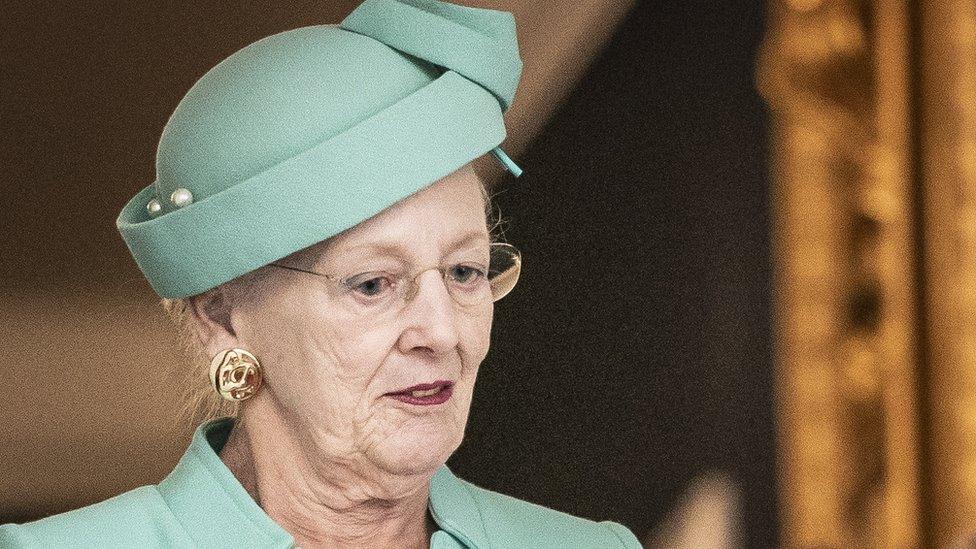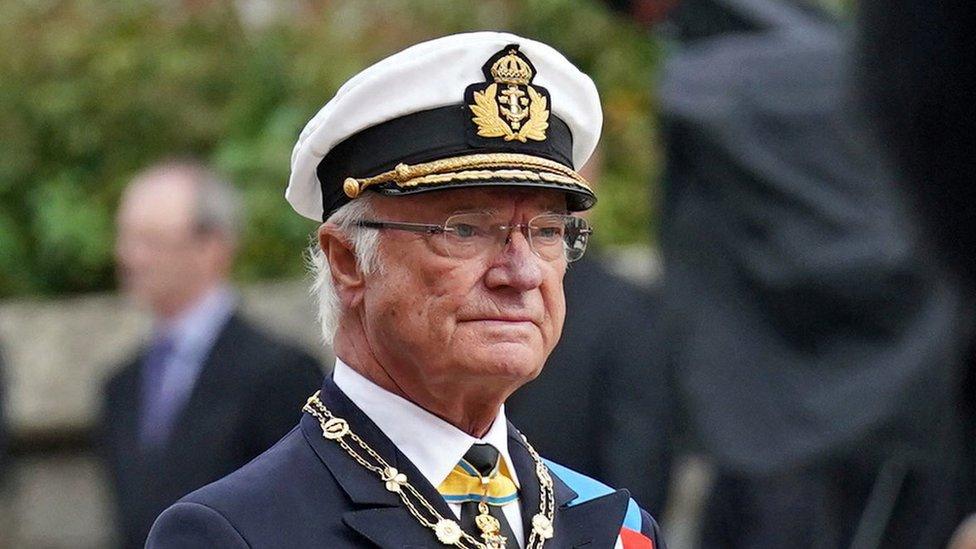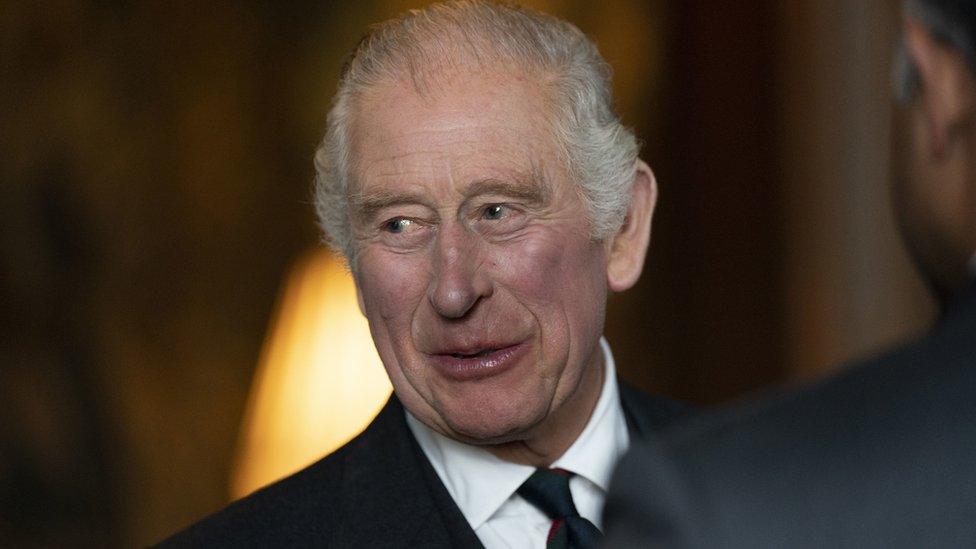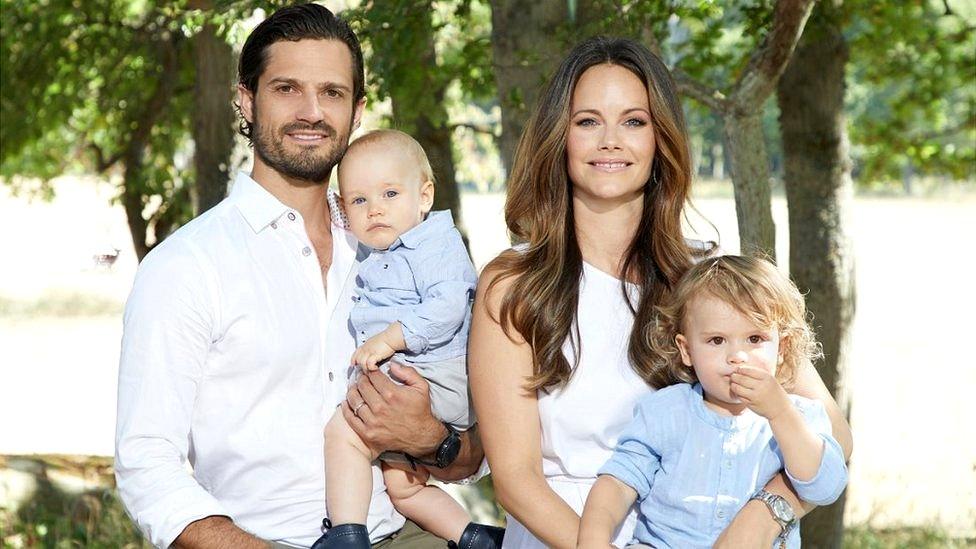Will UK royals follow the Danish downsizing?
- Published

Queen Margrethe said she wanted to "future-proof" the monarchy
When Queen Margrethe downsized the Danish royal family was she setting an example that other royal families might follow?
The sensitivities of such a move were revealed when she had to apologise for the upset and "strong reaction" caused by removing royal titles from four of her grandchildren.
But the 82-year-old queen, now Europe's longest-serving monarch, stuck to her decision, saying that this was the "necessary future-proofing of the monarchy".
"This means difficult decisions must be made," she said.
Particularly difficult for those losing their titles perhaps. But it's a move with other Scandinavian precedents.
In 2019, Sweden's monarch, King Carl XVI Gustaf, removed royal status from five of his grandchildren.
It was again with a nod towards the public mood of not wanting too many royals getting taxpayers' funding.
It might also be seen as an inevitable consequence of the hereditary and dynastic principle of monarchy. Family trees are often going to get bigger, with widening branches of children, grandchildren and relations.
So, like clipping back a royal garden, every so often there will have to be a careful pruning of those defined as having royal status.

Sweden's monarch King Carl XVI Gustaf also carried out some royal downsizing
This reduced-scale approach in Denmark might be in tune with public opinion, with more than three-quarters supporting the monarchy.
This is also a country where the level of public funding for the royal family - currently about £11m per year for the queen, her residences and staff - is linked to the pay index of Denmark's state-sector employees.
But could this be an example for the British Royal Family, with King Charles III long associated with calls for a "slimmed-down" monarchy?
This has never been very specifically defined, but has been interpreted as a plan to focus more tightly on a smaller group of royals - sending a message of purposeful frugality.
It's like the wedding photograph with just the main participants rather than the group shot of whoever was there at the time.
This slimming down might have already happened by default, with Prince Andrew, Prince Harry and Meghan, the Duchess of Sussex no longer carrying out royal duties or receiving public funding.

Will King Charles want to have a "slimmed-down" monarchy?
Buckingham Palace now uses the concept of "working royals" for a smaller group who carry out the round of visits, ceremonies and constitutional duties, distinguishing them from a wider range of royal relatives.
The working royals include the King, Queen Consort, Prince William and Catherine, the Princess of Wales; Princess Anne; Prince Edward and Sophie, Countess of Wessex; Princess Alexandra and the Duke and Duchess of Gloucester.
Last year there were 2,300 official engagements carried out. Princess Anne on her own carried out almost 400.
At the Queen's Platinum Jubilee celebrations earlier this year, the distinction between working and non-working royals was visibly played out on the symbolic platform of the Buckingham Palace balcony.
Prince Harry and Meghan, and Prince Andrew were not on the balcony to wave to the crowds. There were 18 royals on view - presenting much less of a crowd scene, when on occasions in the past there have been more than 40 people on the balcony.
The reign of the new King has only just begun, but there are likely to be questions about how he might want to re-shape the monarchy and how the royal households will be run.
Close to the issue of the size of the monarchy will be its cost to the public.
The public funding of the Royal Family in Britain comes via the Sovereign Grant, which is based on a proportion of the profits from the independently-run Crown Estates.
This pays for the running costs of the monarchy and its working royals - such as staff, travel, overseas visits, the upkeep of buildings, with £86m received last year, with extra costs from renovating Buckingham Palace pushing up overall spending to £102m.
The Prince of Wales also has an income from the Duchy of Cornwall and the monarch has a private income from the Duchy of Lancaster.
Although slimming down the number of cash-hungry royal buildings, rather than the number of people, could be the biggest financial question. Repairs and refurbishments to Buckingham Palace alone cost £54m last year, more than half the total of expenditure.
However, the new King can look to the future with a sense of rising popularity, according to YouGov polling last month, which showed 70% now having a positive view of him, up from 54% earlier in the year and before he took to the throne.
But there are big underlying generational differences in attitudes towards the monarchy, according to YouGov. While about two-thirds across all ages back the monarchy, it's below half for 18-24 year olds.
Monarchies have always had to adapt to survive. As Queen Margrethe said about her own slimming-down plans, she had to "ensure that the monarchy always shapes itself in keeping with the times".
Related topics
- Published3 October 2022

- Published7 October 2019

